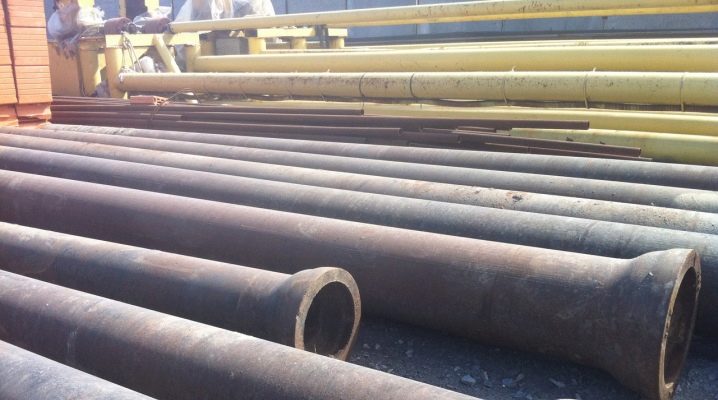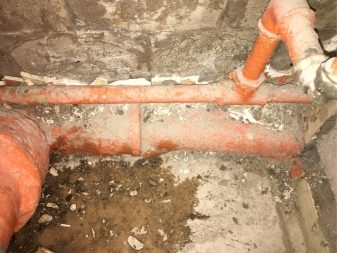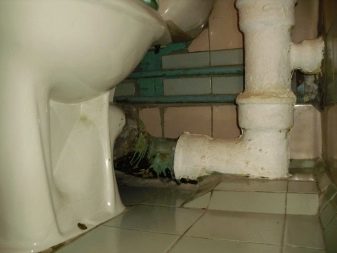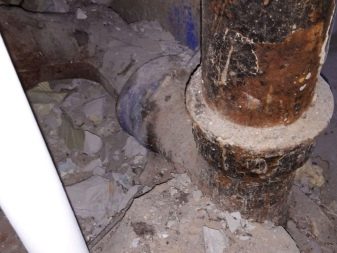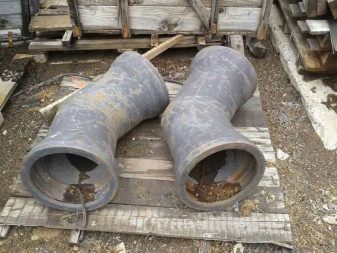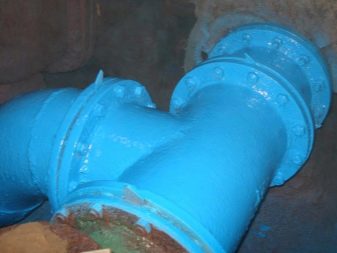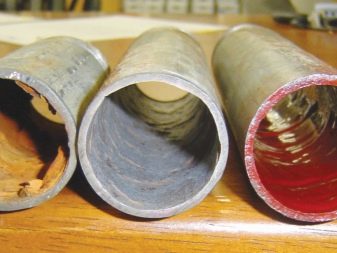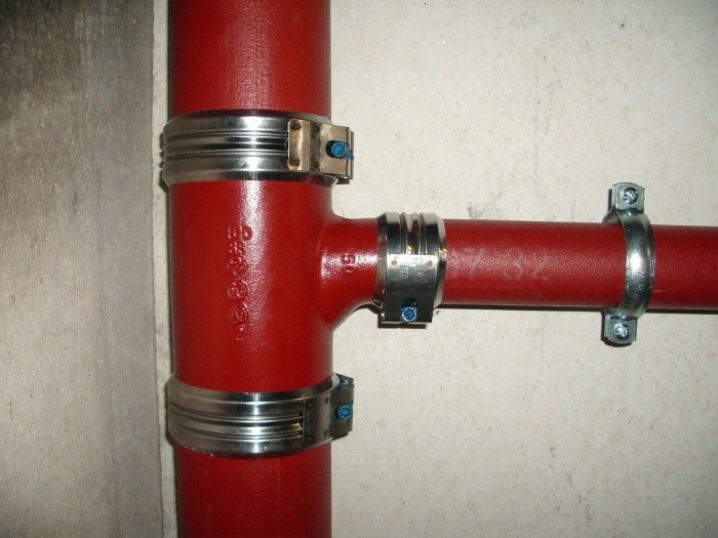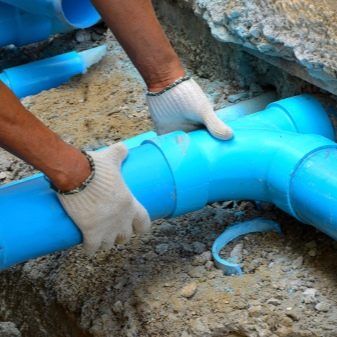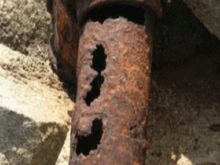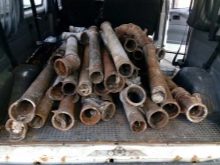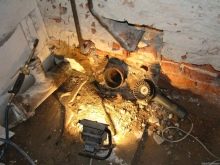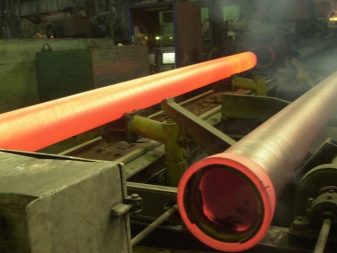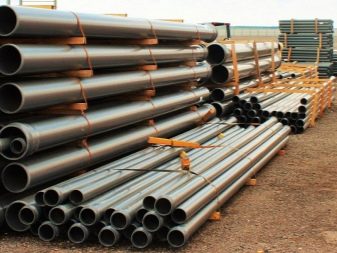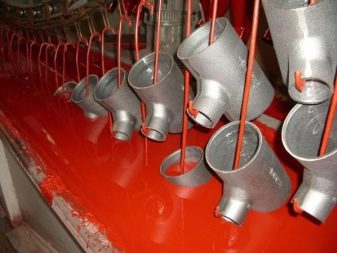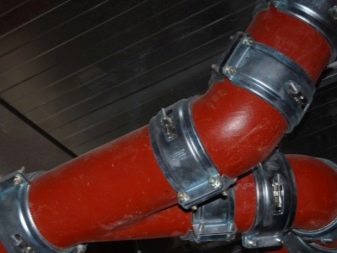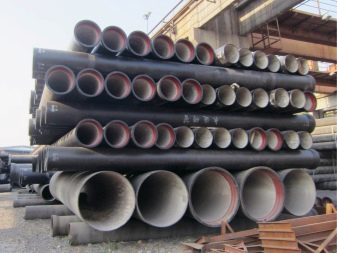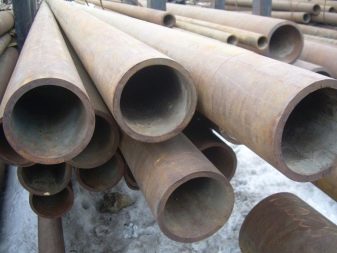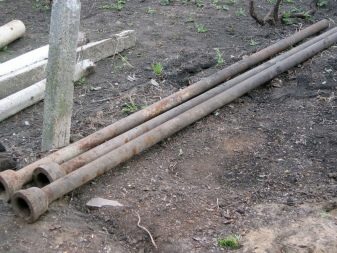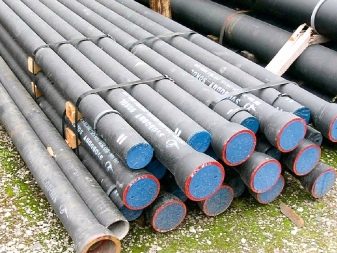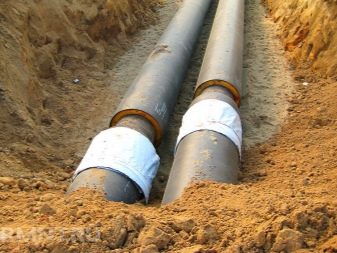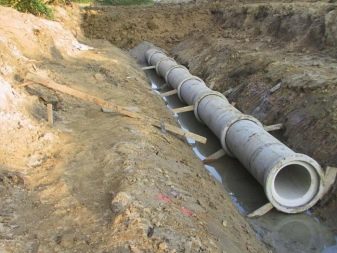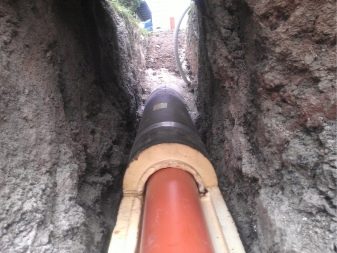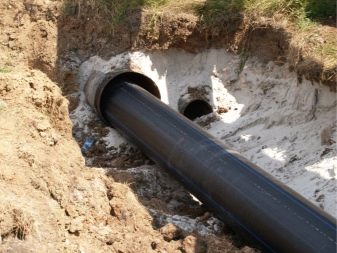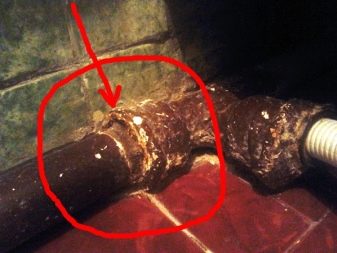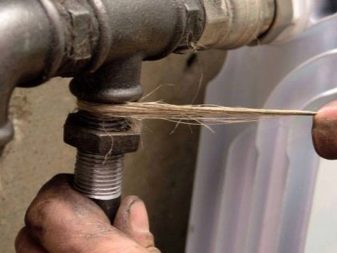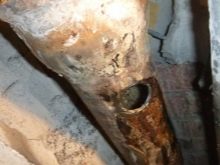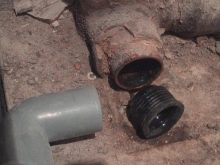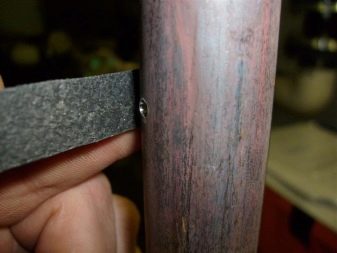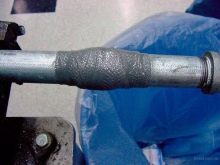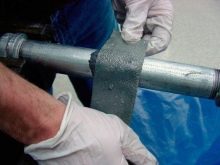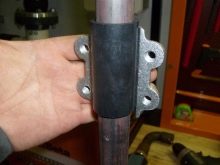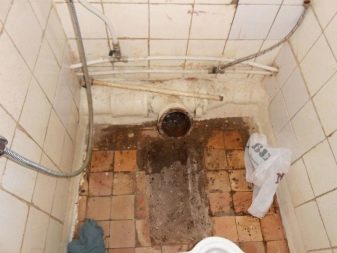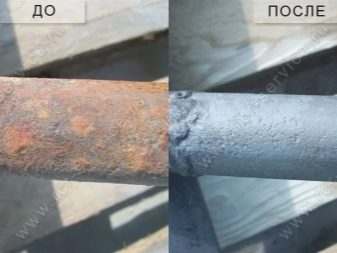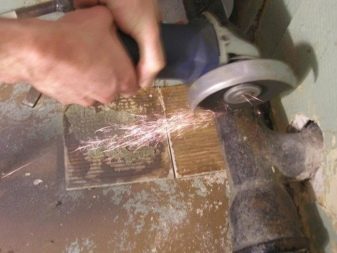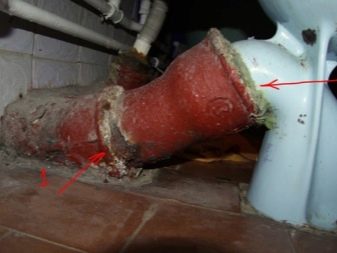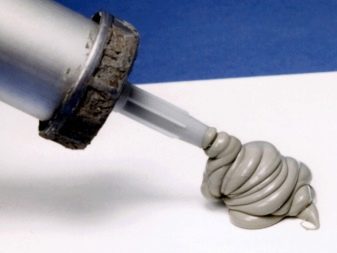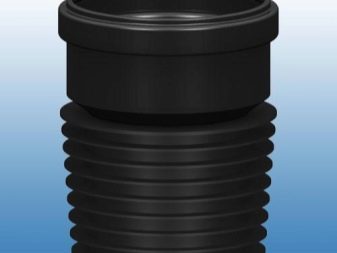Cast iron sewer pipes: types and methods of installation
The cast-iron sewage system is familiar to most people, primarily because of the unsightly appearance of the risers, which are located in the sanitary facilities of Soviet-built houses. But this design has a long service life.
Specifications
Pig-iron sewage is a system of pipes made of cast iron. It can be both external and internal network. In some cases, pipes made of cast iron have the ability to make up a separate part of the sewer structure (riser). Cast iron sewage is made of building materials with a high coefficient of graphite.
Production of pipes is made of gray cast iron by centripetal casting, which means that this material does not withstand shocks.Flame cast iron assenizatorsky pipes have an extension, the value of which depends on the diameter of the device. There is a gap between the outside of the pipe and the socket, the size of which can be 6 mm for pipes 50 and 100 mm and 7 mm for a pipe with a diameter of 150 mm. Shaped areas serve as a means of connecting special elements.
Cast iron pipes can be manufactured according to various parameters. In regulatory documents there are tables with diameters of cast iron pipes.
To protect the material from rust, the product is covered with bitumen on both sides. This treatment makes the walls of the product smooth, which slows down the process of formation of growths inside the structure, as well as helps to improve the patency.
Pipes made of cast iron, though inferior to plastic products, do not lose their position due to their technical characteristics.
Advantages and disadvantages
The main operational characteristics of the pipes are determined features of building material of which the design is made.
- Strength. There are a huge number of loads that can put pressure on the pipeline. First of all, it is necessary to take into account the pressure created inside the system from liquid, vapor, gases, as well as from the inside - due to the soil, various structures.Cast iron pipes differ from their analogues in that they are able to withstand high pressure, so they are used to install central highways, which are laid at great depths.
- Resistance to corrosion. The pipes are resistant to rust, not only from water, but also from domestic wastewater. Cast iron products are less susceptible to chemicals. Due to these properties, pipes are often used in industry.
- Long service life. High levels of strength and corrosion resistance determine that this type of pipeline can last for several decades. But this is conditional if there is no impact of a shock point load.
- Preservation qualities for a long time. The plastic product further loses its hardness and is modified, and the cast-iron variation of production remains unchanged for a long operational period.
- Wear resistance. When planning a pipeline, the capacity factor is taken into account. Wastewater over a long period of exposure can affect building materials like sandpaper. This procedure of erasing the surface is long, but with the dynamic operation of the system, such an effect will be felt already in 1-2 years.Modern casting methods can reduce the coefficient of roughness of the cast iron surface, thereby increasing the wear resistance.
- Low temperature increase. Pipes made of plastic are most in demand among the owners, but they are not used in industry because they lose their rigidity when exposed to high degrees. To organize the supply of hot liquids and vapors, cast iron products are suitable, because such materials are not exposed to high temperatures, the ductility remains unchanged.
- Fire safety when using cast iron pipelines is at the highest level, because this building material can not be ignited.
- Large product range. Today you can buy pipes of any size.
- Reasonable cost of productswhen compared with aluminum and galvanized materials.
If you plan to purchase cast iron products, then you should pay attention to the existing shortcomings.
- Unreliability Despite the high strength to high loads, cast iron is not able to withstand shocks. For example, an old cast iron piece is easily cracked with a hammer blow.
- Cast iron has a high densitythat determines the weight of the structure. Also in the manufacture of pipes to increase the strength to stress, increase the coefficient of wall thickness. A significant increase in mass leads to difficulties in transportation and installation work. In some cases, without the help of special equipment is not enough.
- Small diameters cause problems in production.therefore, variations in equipment performance with a diameter of less than 50 mm are performed quite rarely.
- Using the casting method determines that the surface has a high degree of roughness in comparison with plastic structures. The increase in roughness leads to an increase in resistance, which occurs when water is rubbed against the walls, resulting in the formation of plaque and clogging.
To cut cast iron pipes, it is necessary to use a grinder and specialized wear-resistant circles. The accuracy of the incision depends on the skill and experience of the specialist.
Kinds
Cast iron pipelines are made of different types depending on the purpose of the product.
- Pressure (VSHG). This type of pipe is designed for installation in various industries and plumbing systems for drinking water. The diametral parameter ranges from 100 to 300 mm.
- Non-pressure. Such a material has a large index of flexibility, as a result of which it is not able to withstand high pressure, which means installation on serious objects is prohibited. Non-pressure pipelines are used in everyday life - they can be connected by means of specialized fittings and rubber adapters to pipes made of plastic.
- Stacked bell-shaped. This type is used when installing the pipeline system for several decades. The only disadvantage of this type of material is a high brittleness index, which leads to difficult installation.
- Socketless. In their manufacture, cast iron with a high concentration of graphite is used, the inner surface is treated with a specialized composition. This is necessary to reduce the likelihood of plaque by reducing the roughness indicator. Also, internal special coating increases the resistance of the pipe to the influence of highly aggressive environment.
This type of product is often used in industry, because there is no need to carry out additional actions to protect against noise influences and flame.
Dimensions
Size is classified by internal diameter: standard parameters range from 50 to 110 mm. For example, the marking DN 100 indicates that the inner diameter is 100 mm and the outer diameter is 110 mm. Standardized cast iron pipe markings - from DN 50 to DN 400.
Cast iron pipelines for sewer lines have a length of from 750 mm to 2200 mm. Pipes without expansion, with the polished ends have the increased durability and are made 3 m long, demountable options can be from 15 cm and more.
The thickness of the walls of cast iron pipes is almost the same as plastic options and is 4-5 millimeters. But the weight of metal and plastic structures is significantly different: 1 meter of a pipe made of cast iron with a diameter of 100 mm weighs 14 kg, and plastic equipment with the same parameters has a mass of about 1.5 kg.
The actual mass of structures can vary depending on various factors: in particular, on the indicator of moisture in the air, because rain contributes to the increase in the actual mass of any kind of cast-iron equipment up to 5%,therefore, the above data can only establish an approximate weight of the structure.
Standard sizes of cast iron pipes:
- conditional pass: 50 mm; 100 mm; 200 mm; 260 mm; 350 mm; 600 mm; 800 mm; 1000 mm;
- outer diameter (mm): 81; 118; 274; 378; 635; 842; 1048;
- wall thickness (mm): 7.4; 8.3; 11.0; 12.8; 17.4; 21.1; 24.8;
- length (mm): 750; 1000; 1250; 2000; 2100; 2200.
Mounting technology
Before proceeding with the installation of cast iron asynesia pipes, it is necessary to perform a condition check.
First carried out a visual inspection. On the outside of the product there should be no defects (dents, stains, bumps).
The surface must be perfectly aligned. The presence of cracks is not allowed - they can cause leakage. To fully ensure that the quality of the material meets the standards, you can gently knock on the surface - in any area the sound should not differ.
Creating an outdoor sewer. Pipe installation begins with the design. Experts recommend digging a trench with a minimum number of bends. The ideal solution is a straight, straight, straight tube.
If you can’t do without them, and the size of the system is more than 12 m, then inspection pits are mounted on such areas - blockages often occur in these places.
The main thing is to correctly calculate the installation depth of the pipeline. To do this, you need to take into account the level of soil freezing, as well as the level of the sewer pipe inlet into the pipeline of the central asynisation system. It is also necessary to create a slope for the pipe.
In the case of a deep trench, it is imperative to perform insulation work. The minimum trench width should be the sum of the diameter of the iron pipe and the size of 20 mm on each side for the pipeline. If the pipe is wider than 200 mm, then free space should be increased.
When laying sewer pipes in the ground, the technology includes the following steps:
- digging a trench of suitable size;
- laying on the bottom of the pit sand cushion (thickness about 50 mm);
- tamping the bottom of the trench;
- laying and connection of sewer pipes;
- connection to the internal sewage and cleaning mechanism;
- system operation check;
- backfill with sand on the sides of the pipeline;
- backfill the sewer above the ground.
Cast Iron Pipe Connection
Often there is a need to connect the sewer pipes in the room (in the apartment, house).
The connection of sewer pipes is carried out with the help of sockets, which are located at the ends of pipes connected to each other.The installation process involves several sequential steps.
The pipe section in which there is no bell is installed in the socket of the mounted pipe.
The gap between the edges of the socket inside the pipe section installed in the socket, there is a gap that must be sealed with tow. This is accomplished by hammering into the socket of the coiled-up coil by means of a wooden spatula, hitting it with a hammer. It is necessary to ensure that when zakanivanii tow did not fall into the pipeline.
When two-thirds of the pipe is filled with a compactor, the caulking stops.
The last third of the pipe must be filled with a sealant that is not treated with any impregnating mixture.
Fill the socket with a cement mixture. For such tasks, use cement labeled M300 or M400. A mixture of water and cement should be in the ratio of 1: 9.
The cement mortar is compacted in the socket, and a rag soaked in water is placed on top of the solution, which prevents cracks from forming until the mixture dries out completely.
Insert into the sewer pipeline. If it is necessary to perform a tie-in into the sewer construction, then the following consecutive steps should be taken:
- a hole is drilled in the pipe that is equal to the diameter of the element to be connected;
- a plastic threaded flange is installed in the recess;
- you need to pull the threaded protrusion and press the flange against the inner wall of the pipe;
- a gasket, gasket and coupling is installed;
- the center of the nozzle is twisted into the protrusion;
- the coupling and the ring are connected to the pipe;
- The assembled pipe is inserted into the pipe and tightened the thread.
Repair and disassembly
Sometimes you can repair cast iron pipes yourself. For example, the riser, located in the bathroom or bathroom, began to leak. If the fistula or crack is small, then you can rectify the situation without resorting to replacing the riser.
If you have time to make repairs in time, you can hope for further operation of the pipe. In the event that a pipeline burst in one of the apartments above, the main task of its repair is to block the inlet into the room of the rising gases of the riser.
- To seal the crack, it is necessary to prepare a piece of rubber of the required size and wire. Wire can be replaced with clamps.
- Then you need to put a rubber material on the formed crack and firmly secure it to the pipe with wire.
To eliminate leaks apply:
- caps;
- gauze;
- specialized clamp
If a hole was formed on the lower floors of the building, then a rubber patch will not be enough to eliminate the leak. For such cases, there are available leak repair methods.
The use of cement. If the coupling has burst, experts recommend to cover the cracks with cement mortar. Cement is diluted with water so that the mixture is not too thick and not too liquid. Then the bandage is cut into pieces of 30-40 cm.
Before sticking to the cast-iron pipe, it is necessary to lower the bandage into the cement mortar for impregnation. Then the bandages are applied to the pipe.
The cement will dry for about 24 hours, so it is necessary that the sewer system is blocked at this time.
A more complicated variation is the overhaul, which is required when extensive damage is formed on the pipe. To eliminate this problem, you must perform some actions.
Prepare a place of work. If the pipe is rusted, you need to remove rust. The resulting crack is slightly deepen. The surface of the material is degreased with acetone or gasoline.
After that, a mixture of orthophosphoric acid and copper oxide is made in a ratio of 2: 3. The resulting mixture is necessary to caulk the formed crack.
Replacing the damaged part of the pipe.
- It is necessary to cut off the damaged section of the pipeline with a hacksaw. To speed up the process, the structure can be cut with a grinder. Connections unwind, cleared.
- The old pipeline is captured with a pipe wrench, holding it securely. A new thread is being cut.
- A sealing sleeve is fixed to the fixed part of the pipe and the size of the missing pipe is measured.
- Then you need to adjust the parameters of the new pipeline, which is threaded.
- Flax is wound on the outer part of the thread, it is necessary to cover it with sealant on top. A new pipe is connected to the old one by means of a cap nut.
Caulking the cast iron pipeline. The embossing of the aspenizatorsky system is required if the socket method was used during the installation work. To remove the sewer pipe, you must first shut off the water. Then warn neighbors from above so that they do not use sewage for a certain time.
To understand how to disassemble or disconnect the cast-iron pipe, you need to determine what was used to connect the pipes: sealant or sealant.
Pipeline caulking on the seal begins with the need to repel the waterproofing using a specialized rubber mallet. After that, the joint is loosened, and the sewer pipe is pulled out of the socket. After the pipe is pulled out, it is necessary to clean the hole from the cable. If during assembly the joint is minted with sulfur, then it must be removed by cold welding.
The caulking of the pipe on the sealant is carried out differently. First you need to tap the joint, and then remove the waterproofing layer, burn the sealant with a blowtorch. When the structure cools down, it can be pulled out of the socket without much effort.
For information on whether to change the cast-iron pipes for plastic, see the following video.
